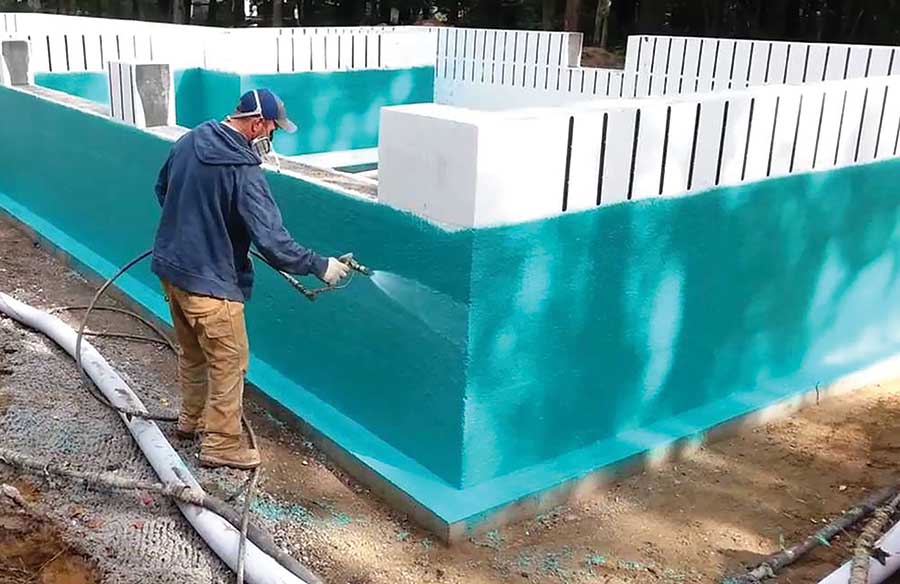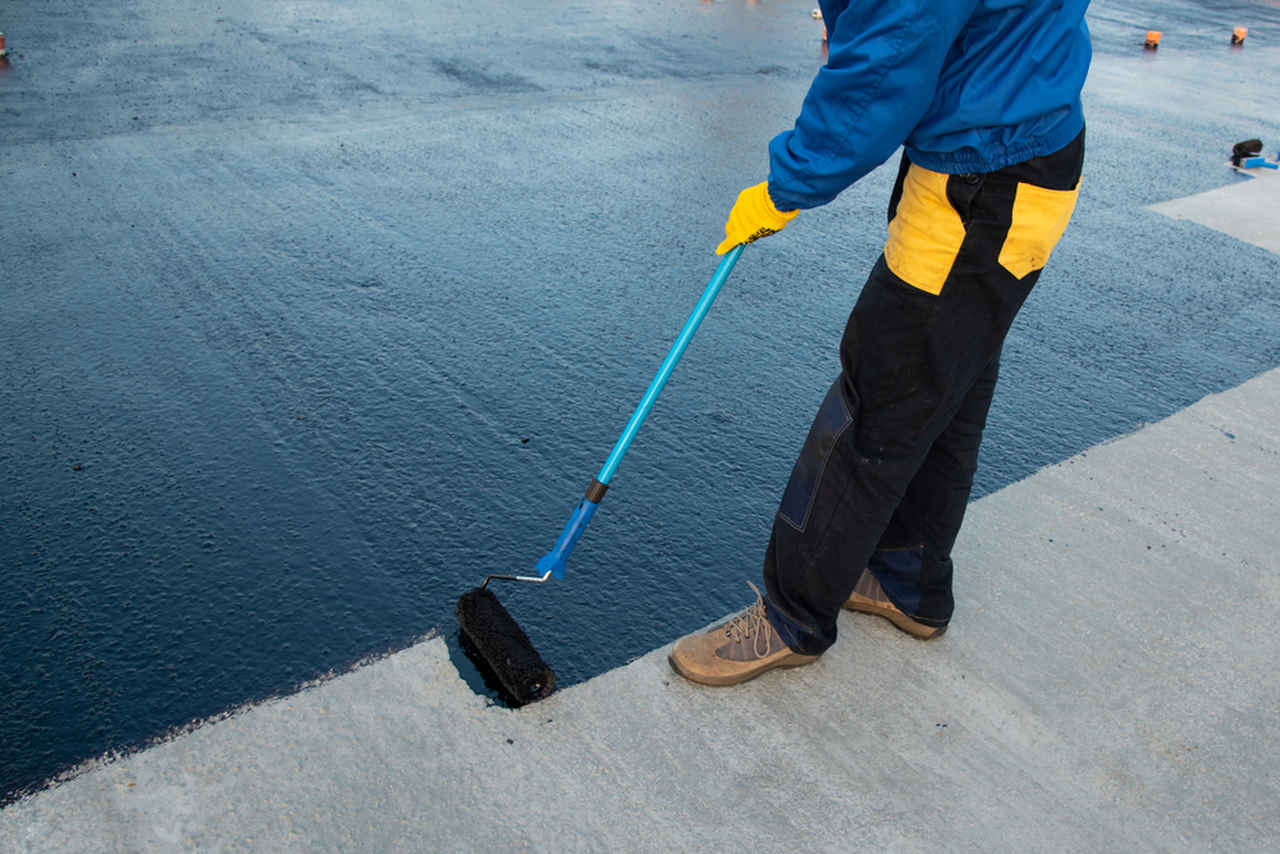Water Solutions That Withstand Omaha Weather: Storm-Proof Options
Kinds of Waterproofing: Checking Out the Numerous Methods and Their Applications
Waterproofing is an important facet of construction and maintenance. It protects frameworks from the damaging results of water damages. There are several techniques available, each with its unique applications and advantages. From membrane systems to cementitious remedies, recognizing these options is crucial for reliable implementation. The selection of waterproofing approach can substantially influence longevity and long life. Checking out these various techniques discloses their distinctive benefits and possible difficulties, motivating further consideration of optimal services.
Membrane Layer Waterproofing Systems
Membrane layer waterproofing systems function as a crucial barrier versus water intrusion in different structures. These systems commonly contain thin sheets made from products like rubber, polycarbonate, or asphalt, which are put on surfaces to stop moisture penetration. They can be mounted over or listed below grade and are particularly effective in areas prone to high water exposure, such as basements, roofing systems, and foundations.The setup process includes cleaning up the substratum, using adhesives or guides, and precisely fitting the membrane to assure full coverage. Membrane systems can be either totally stuck, mechanically affixed, or laid loose, depending upon the particular needs of the task. They use durability and flexibility, fitting structural motions without compromising their waterproofing capacities. These systems can be strengthened with extra layers for enhanced protection. Ultimately, membrane waterproofing systems are essential for safeguarding structures versus water damages and preserving lasting stability.
Liquid-Applied Waterproofing Coatings
Liquid-applied waterproofing layers offer a versatile option for shielding surface areas from water seepage - Landscape drainage Omaha. These coverings are composed of fluid materials that, when applied, create a seamless, flexible membrane layer. Their flexibility enables application on numerous substratums, consisting of concrete, steel, and wood. The finishings can be utilized in diverse atmospheres, from domestic to industrial settings, making them appropriate for roofing systems, foundations, and below-grade structures.One significant benefit of liquid-applied finishings is their capacity to adjust to uneven forms and penetrate fractures, creating a durable barrier versus moisture. They usually display outstanding bond properties and resistance to UV radiation, ensuring long life and longevity. In addition, the application process is typically straightforward, enabling fast installment and minimized labor costs. This technique likewise lessens the danger of water pooling, as the continual layer properly guides water away from vulnerable areas. Overall, liquid-applied waterproofing coatings are a reliable choice for thorough water defense
Cementitious Waterproofing Solutions

Cementitious waterproofing solutions supply a robust option for frameworks needing trusted dampness defense. These systems mostly make use of a blend of cement, sand, and chemical additives to develop a waterproof obstacle. They are frequently used to surfaces such as concrete wall surfaces, foundations, and floorings, offering a durable, long-lasting defense versus water intrusion.One of the crucial benefits of cementitious waterproofing is its simplicity of application; it can be applied using a brush, roller, or spray, making it suitable for numerous task sizes. In addition, this approach works with many surface areas and can often be made use of in combination with other waterproofing techniques.Cementitious remedies are specifically effective in atmospheres where water exposure is an issue, such as cellars or below-grade frameworks. Their outstanding attachment buildings ensure that they bond well with substratums, supplying a solid and nonporous layer against wetness infiltration.
Bentonite Waterproofing
Bentonite waterproofing is an extremely effective method that utilizes salt bentonite clay to create an all-natural obstacle versus water. This strategy manipulates the distinct residential properties of bentonite, which increases upon call with water, securing any basement waterproofing contractor kind of possible leakages published here and preventing moisture infiltration. It is frequently utilized in numerous applications, consisting of structure walls, passages, and preserving wall surfaces, where water resistance is essential.Bentonite can be applied in several forms, such as panels or blankets, giving versatility in installation. Its ability to self-seal makes it an eye-catching alternative for locations subject to shifting soil or rising and falling water levels. In addition, bentonite waterproofing is eco-friendly, as it is an all-natural material that does not introduce harmful chemicals into the environments.
Drain and Exterior Waterproofing Solutions
Effective waterproofing typically includes a combination of methods, including water drainage and outside systems. Water drainage systems, such as French drains and sump pumps, are developed to reroute water far from frameworks, lowering hydrostatic stress against structures. These systems are vital in stopping water accumulation that can lead to structural damage and mold and mildew growth.External waterproofing, on the other hand, entails applying protective barriers to the building's exterior. Techniques such as the installment of water resistant membranes, coatings, or sealers can aid prevent water infiltration. This technique not only protects the structure but likewise enhances the general toughness of the structure.Together, drainage and outside waterproofing systems form a thorough option to manage water go to this website successfully. By implementing these techniques, homeowner can secure their financial investments against the harmful effects of wetness, ensuring long-lasting security and safety and security for their buildings.
Regularly Asked Concerns
How Do I Select the Right Waterproofing Technique for My Task?
Selecting the ideal waterproofing method relies on factors such as job kind, ecological problems, spending plan, and desired durability. Reviewing these facets permits for notified choices customized to particular requirements and demands.

Can Waterproofing Be Applied in Cold Climate Conditions?
Waterproofing can be used in chilly weather condition conditions, yet it requires details materials and strategies. Cold temperatures may impact healing times and adhesion, necessitating cautious option of products developed for low-temperature application.
What Are the Common Indications of Waterproofing Failing?
Common indications of waterproofing failure include noticeable water spots, peeling off paint, moist smells, mold development, and fractures in walls or structures. Basement waterproofing Omaha. These signs recommend that dampness is penetrating the obstacle, endangering its effectiveness
The Length Of Time Does Waterproofing Last Before Needing Upkeep?
The long life of waterproofing varies, usually lasting in between 5 to ten years. Factors such as material quality, environmental conditions, and maintenance methods influence its durability, demanding regular evaluations to guarantee reliable security against water breach.
Are There Eco-Friendly Waterproofing Options Available?
The inquiry of environment-friendly waterproofing options reveals an expanding interest in sustainable materials (Sump pump installation & replacement Omaha). Numerous natural substances, such as plant-based sealants and recycled products, use efficient services while minimizing ecological influence, attracting environmentally conscious customers